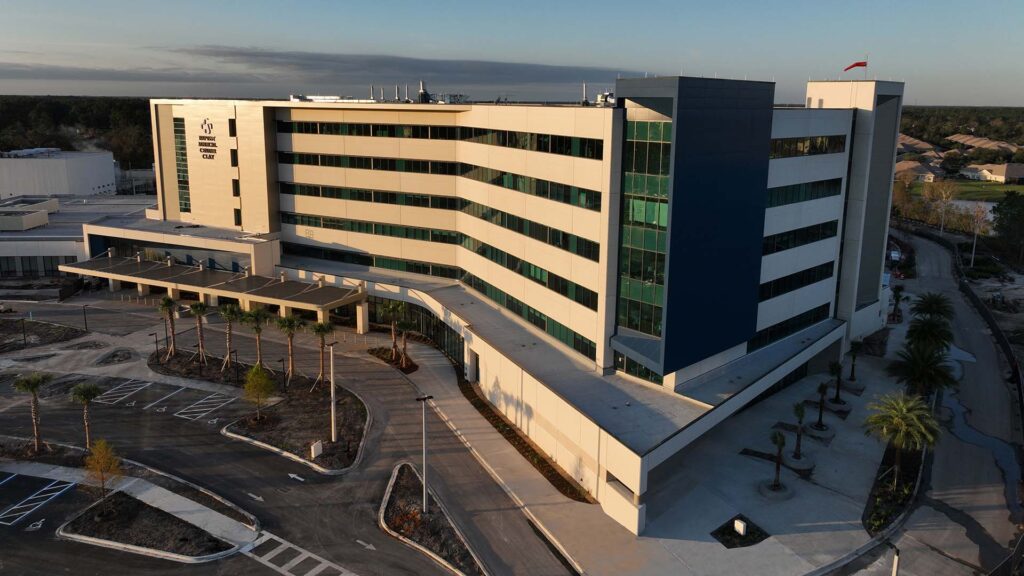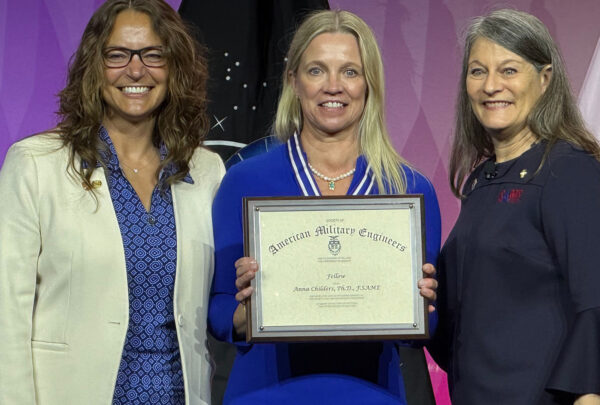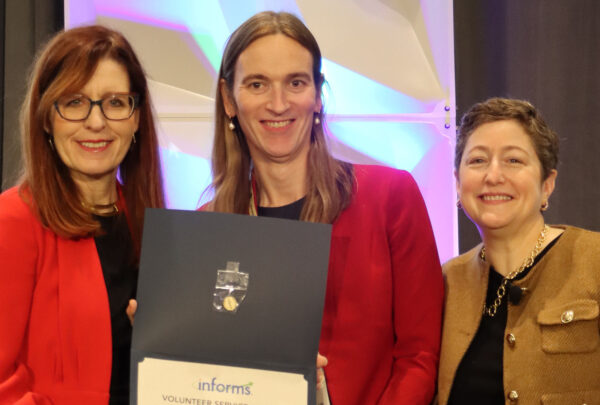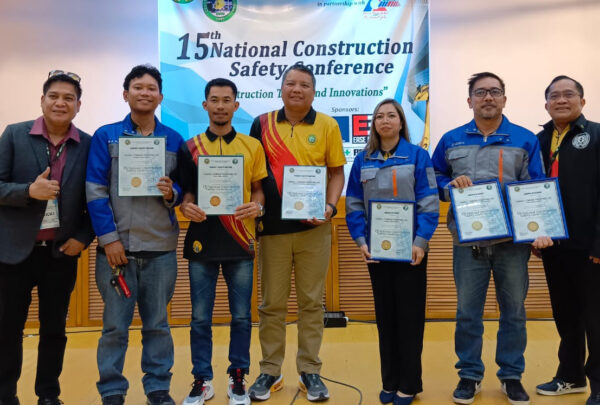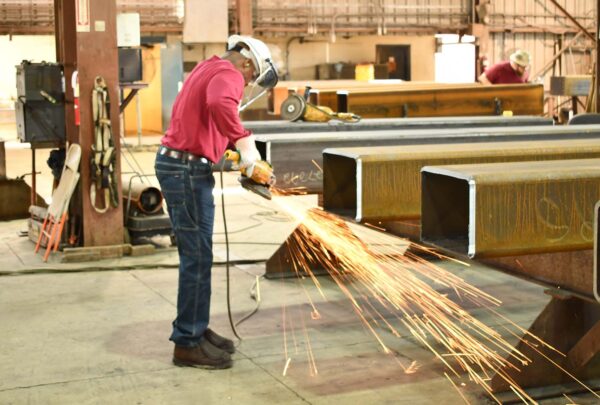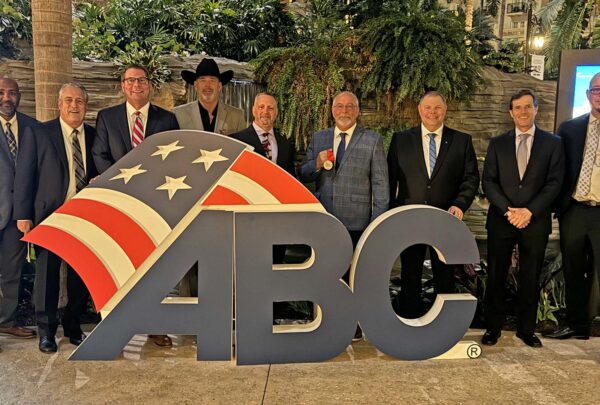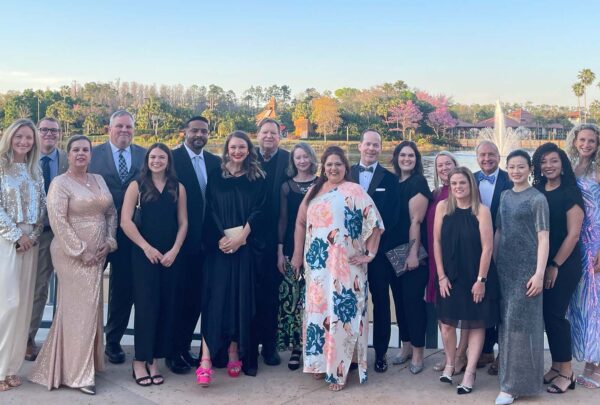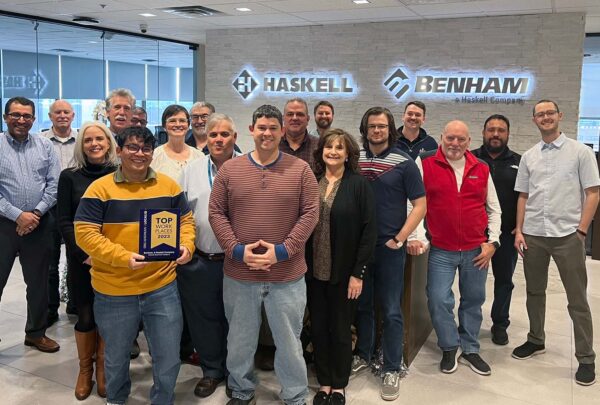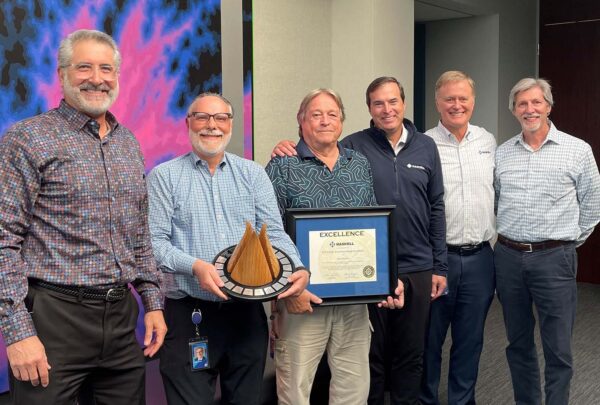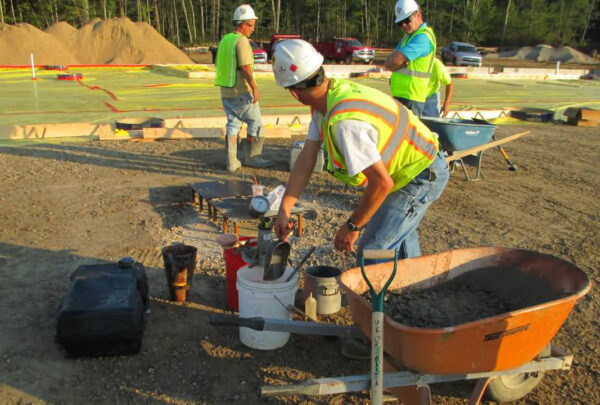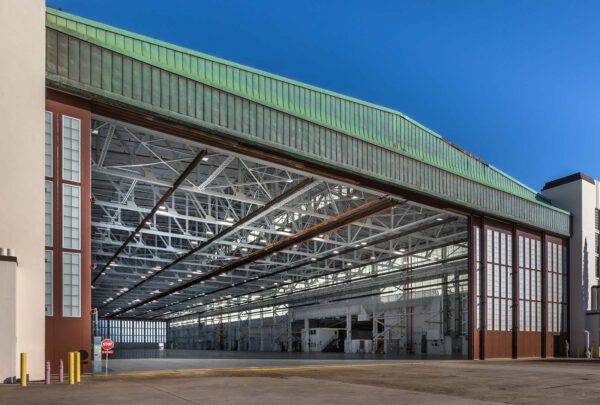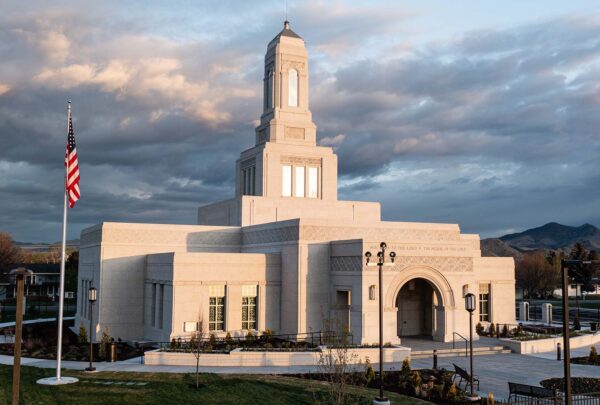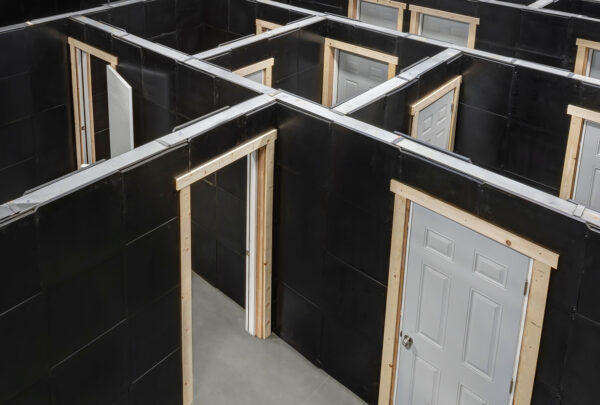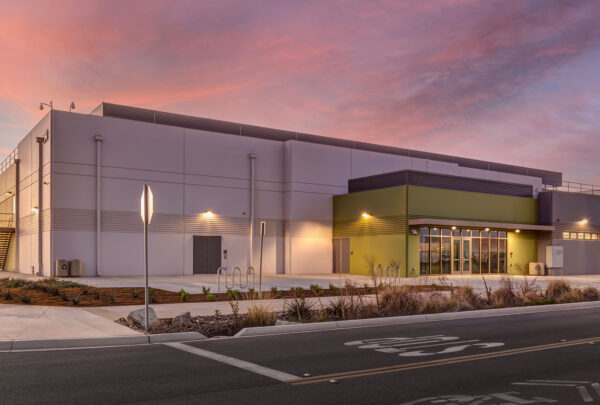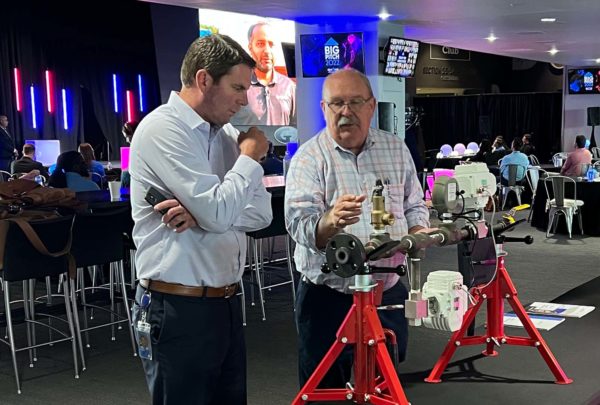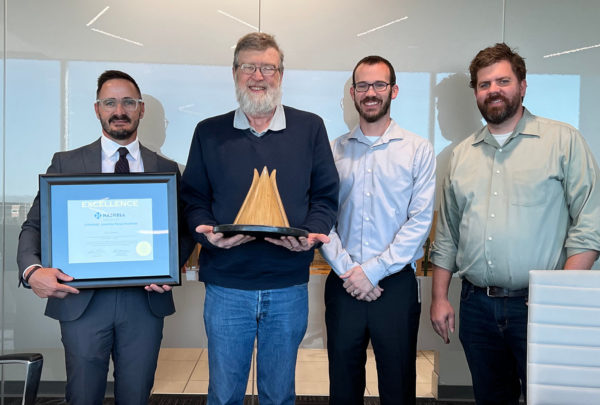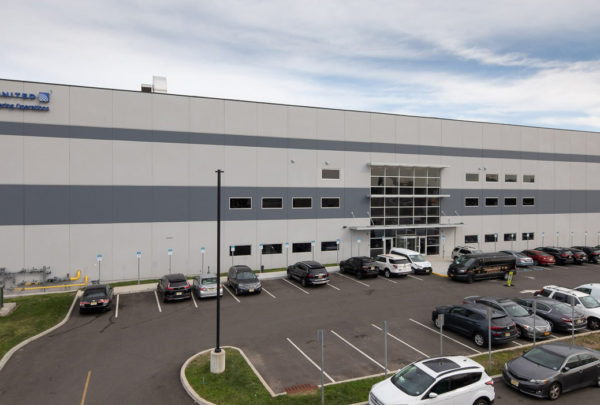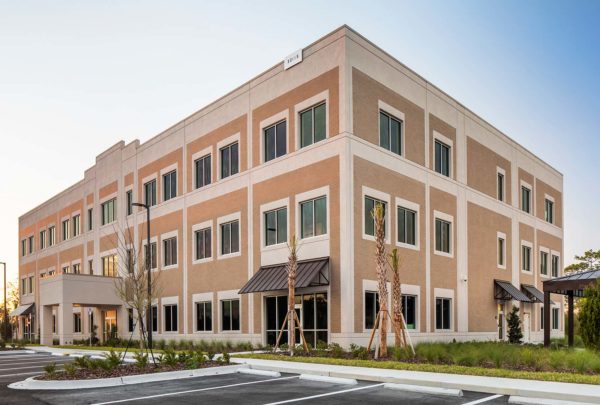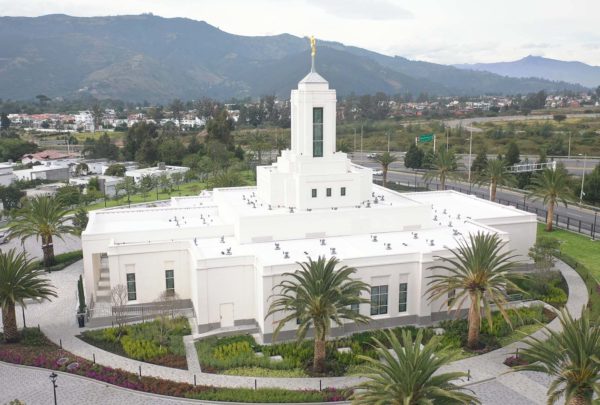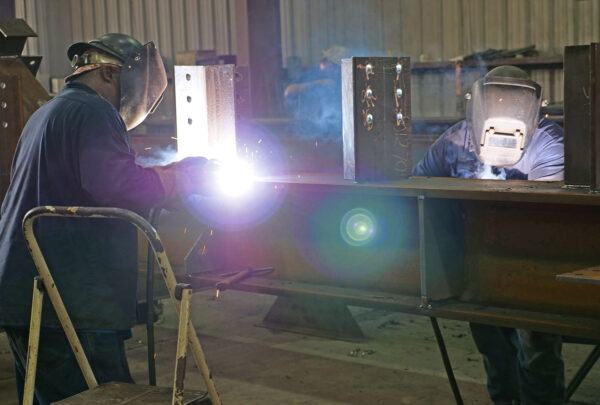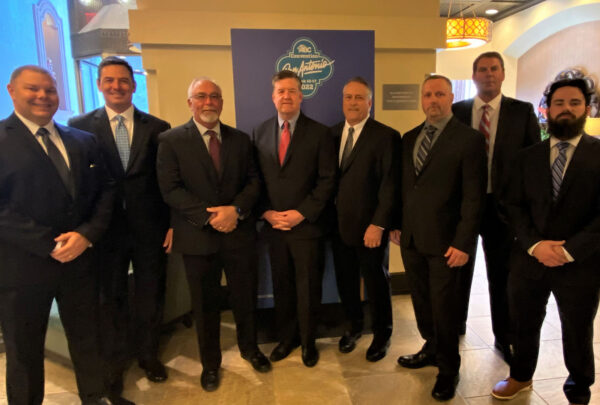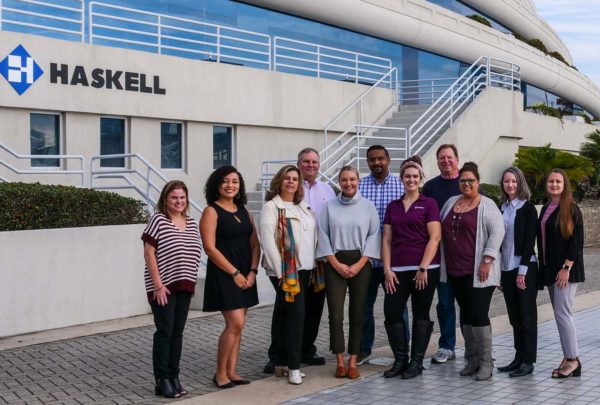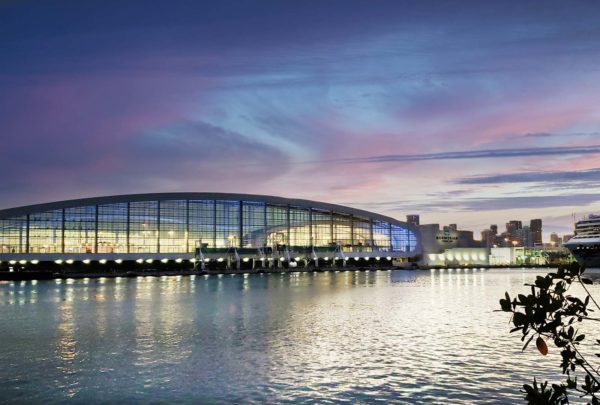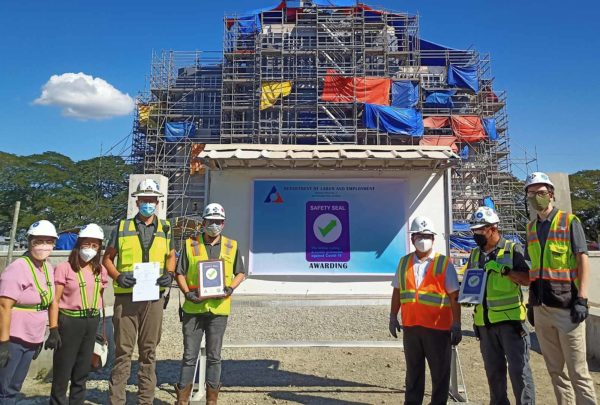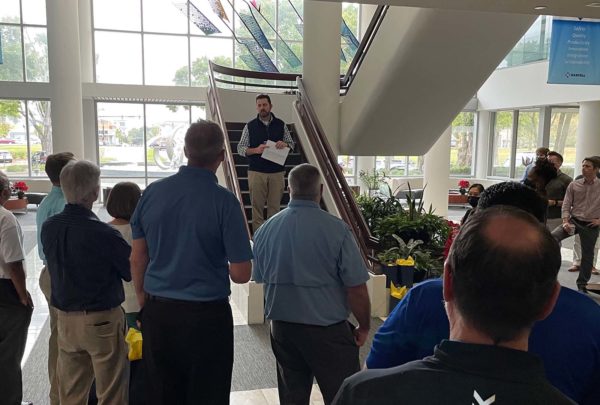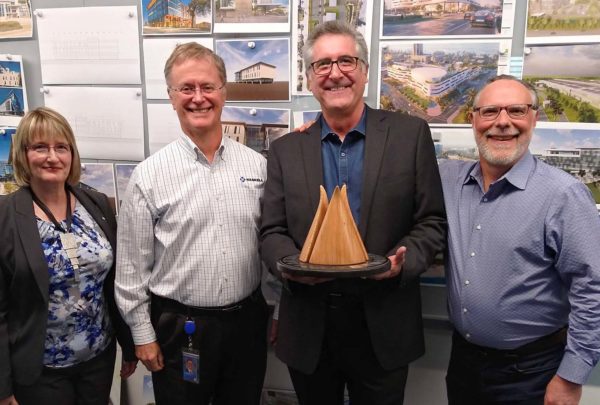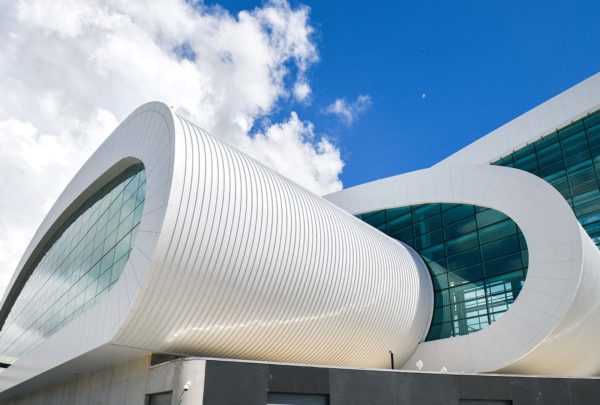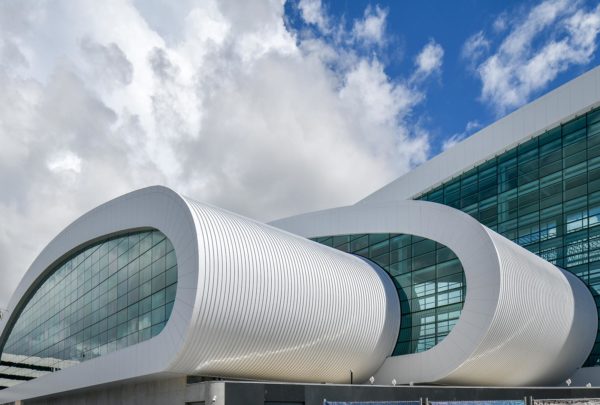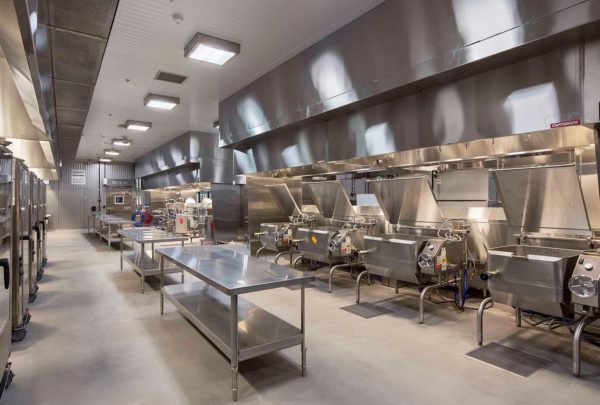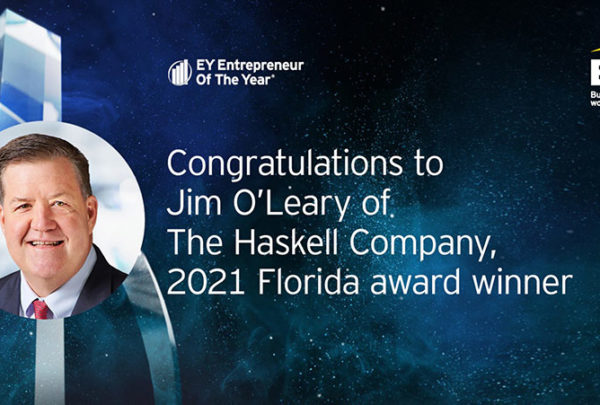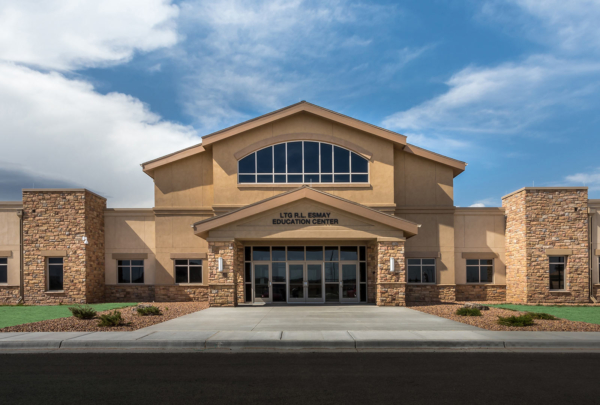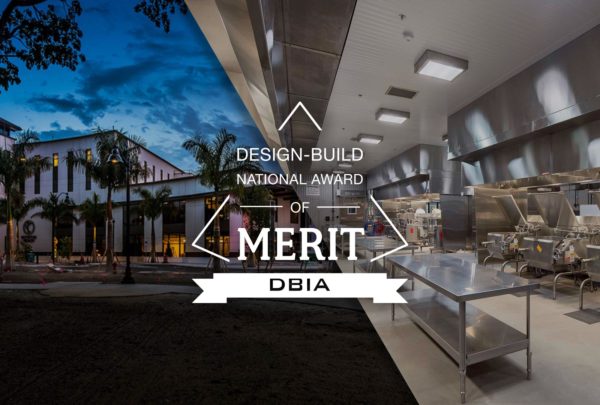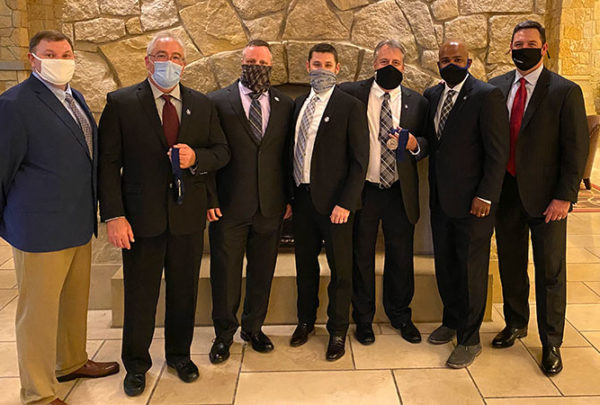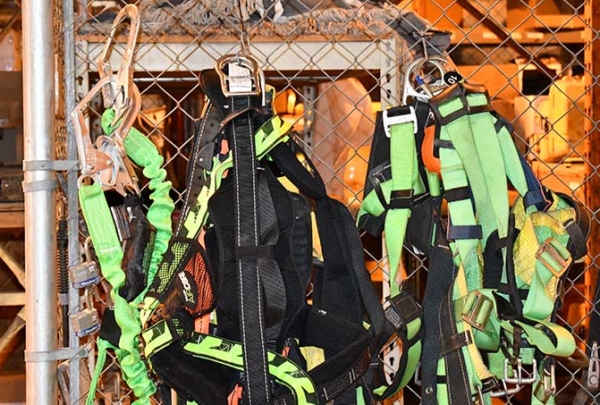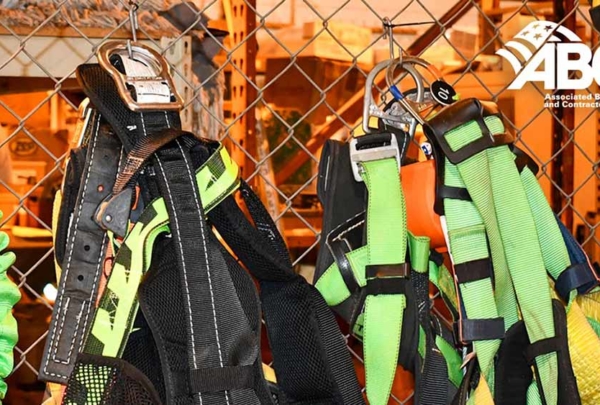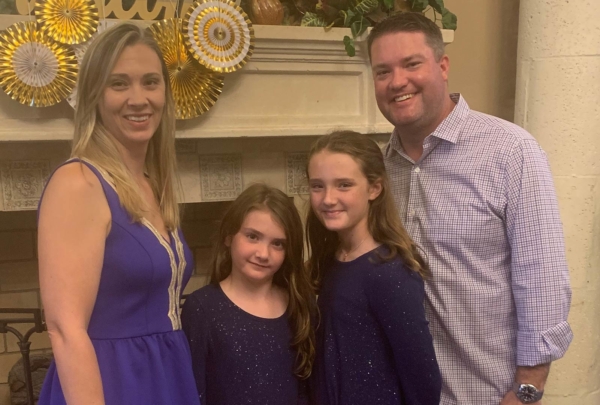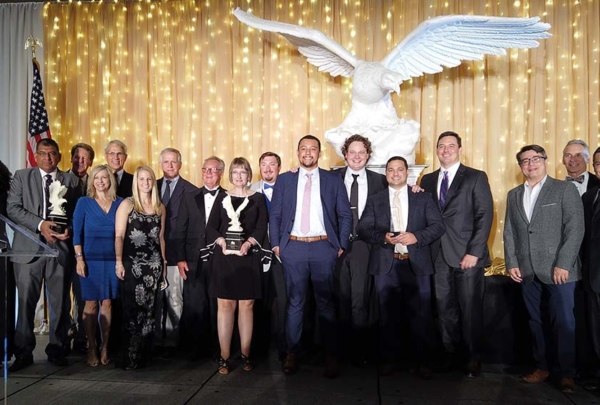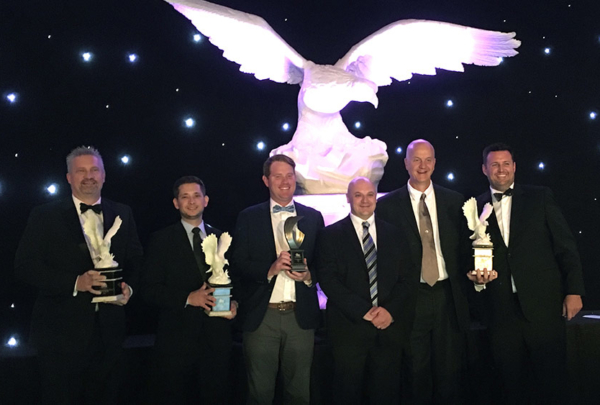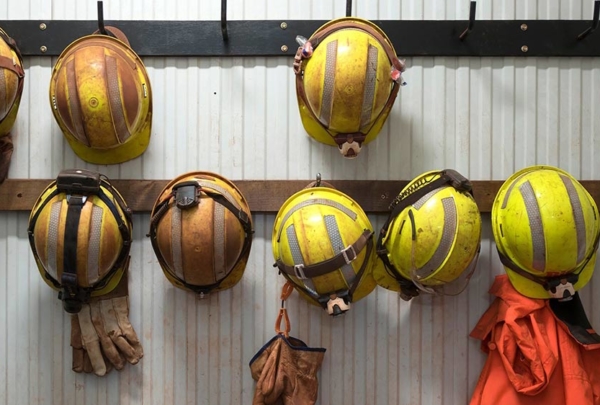The Associated Builders and Contractors (ABC) Florida First Coast Chapter recognized six Haskell projects as winners of 2023 Eagle Awards, the chapter’s highest recognition, at its annual Excellence in Construction awards gala on Friday, August 18
The following projects received Eagle Awards:
- Helena Montana Temple
- MARS Hackettstown
- Baptist Clay Medical Campus Tower and CEP
- Lower Poplar and Rocky Creek WRF Upgrades
- UF Florida Museum of Natural History Special Collections Building
- Fleet Readiness Center Hangar 101 Repairs
In addition to its Eagle Award, MARS Hackettstown was one of four nominees for regional project of the year.
The ABC’s Excellence in Construction Awards program raises construction standards by recognizing the workmanship of those who contribute and by showcasing the results of their commitment. Entries are judged on execution of design, quality of craftsmanship, attention to detail, proper installation, outstanding planning and coordination efforts, challenges successfully overcome, project complexity, custom materials, safety programs and owner satisfaction.
Eagle Award winners must earn 80% or more of the eligible points and score the highest in their category. Eagle and Award of Merit-winning projects are eligible to enter the National ABC Excellence in Construction competition.
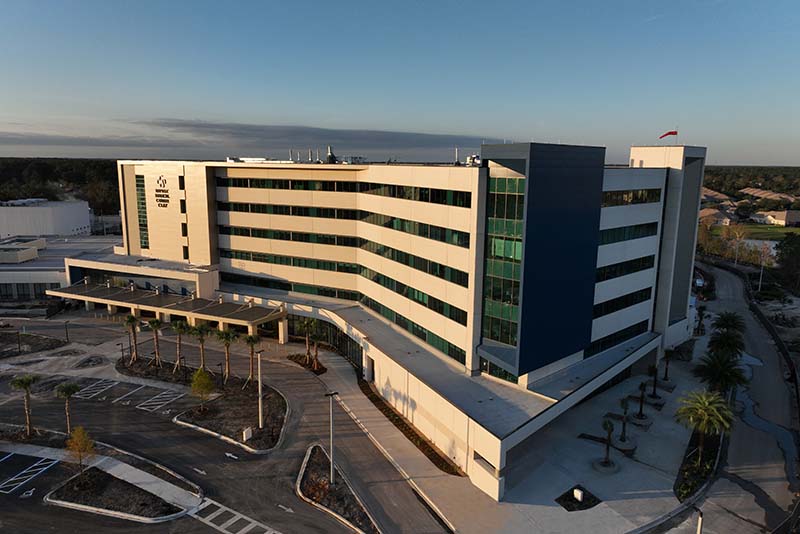
Baptist Clay Medical Campus Tower and CEP
Haskell was selected as construction manager at risk for a 347,069-square-foot, six-story hospital addition to the Baptist Clay Medical Campus in Fleming Island, Florida. This project would aid Fleming Island and the surrounding area with the needed hospital care.
The six-story addition includes labor and delivery rooms, NICU care, critical, intermediate and surgical care, emergency departments, pre-admission testing, registration, administration, a conference/education center, dining, a gift shop and a chapel. The project included renovations to the existing building, and the addition has two floors of shell space for future growth. It also included a new central energy plant (CEP), and the construction of this tower was completed during normal hospital operations, requiring coordination with the hospital to prevent disruptions and alleviate safety concerns.
Some of the technologies Haskell utilized during this project were HERO, vGIS and Imajion. HERO is a VR training tool that helps trade partners understand safety protocols before entering the job site. vGIS uses augmented reality to detect utility strikes before breaking ground and is a technology that Baptist Clay is continuing to test for future builds. Imajion helps the Quality team see jobsite conditions remotely through a HoloLens camera, which provides clear communication and faster response than a site visit. Concrete construction featured both tilt-up and precast.
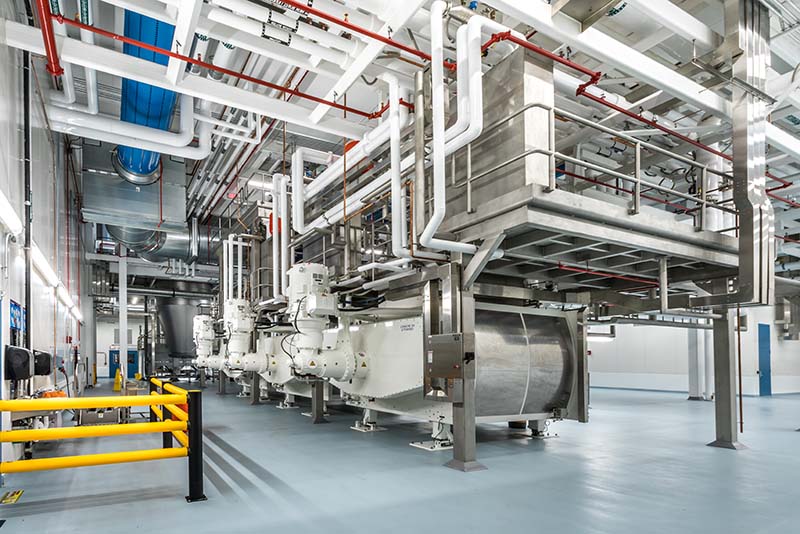
MARS Hackettstown
Mars Wrigley tasked Haskell with a Chocolate Process Building Expansion to improve the existing confectionary factory’s capabilities. The project had three elements: renovation and vertical expansion, relocation and construction of a new plant for testing, and a substation and chilled water supply addition for the new manufacturing plant.
The renovation and vertical expansion of the existing warehouse accommodates 58,290 square feet of new food manufacturing process space, which was completed in an operating plant. This called for strict safety protocols to minimize noise and risk in a construction environment and careful coordination to ensure the renovation did not disrupt production. Haskell employed clash control throughout the design process to ensure the coordination of design elements and maximize efficiency.
The chilled water supply and 12.5 KV power supply were initially to be installed on the roof of the existing plant upon completion of its renovation. Haskell instead proposed that these be rerouted to the exterior wall using free-standing pipe supports, which would cut costs, extend the length of the utilities and further minimize disruptions.
Off-site fabrication and testing of components such as decking, piping, and utility racks expedited the schedule and allowed more rigorous testing before installation.
The project achieved LEED Silver certification.
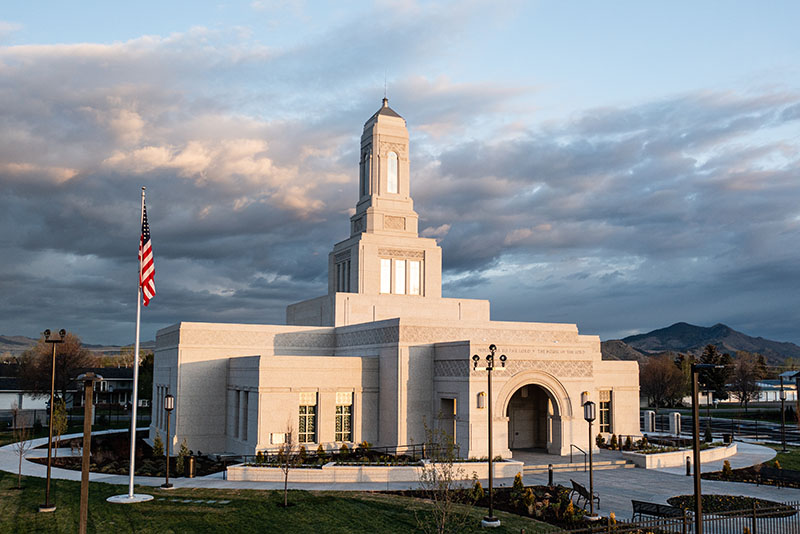
Helena Montana Temple
Facing a significant increase in demand for temples worldwide, the Church of Jesus Christ of Latter-day Saints partnered with Haskell to develop a modular approach to temple construction to accelerate project schedules without sacrificing quality. Although modular construction is not new, it has never been applied to temple construction before. The Helena Temple was the first project to test the viability of this new approach and took roughly 12 months from the setting modules to substantial completion.
The Temple is an example of the Church’s high standards for materials and quality, featuring Portuguese stone for the exterior, Turkish stone for the interior, and quarter-sawn cherry wood. Using these hard-surfaced materials required a high degree of precision that is atypical in modular construction. The successful incorporation of these elements attests to the extensive planning, engineering and oversight involved in the temple’s construction.
The structure comprises 25 modules manufactured by Bessemer, Alabama-based BLOX, a Haskell strategic partner. Each module is created in the factory and includes mechanical, plumbing and electrical. The modules are then transported to the site, where they are stitched to form the core of the building.
The sacred space created in Helena was created efficiently thanks to the planning done before breaking ground. This planning was composed of multiple mockups and sample pieces, allowing the team to show the possibilities of the build. Because it was the first modular project Haskell had done for the Church of Jesus Christ of Latter-day Saints, the team researched to ensure they were using the best materials and methods for the cross-country transport of the modular build and different methods for installing art and other features of the building.
The Helena Temple is half the size of the Church’s normal builds, which helped promote sustainability and minimal impact while still containing all the necessary elements for worshippers.
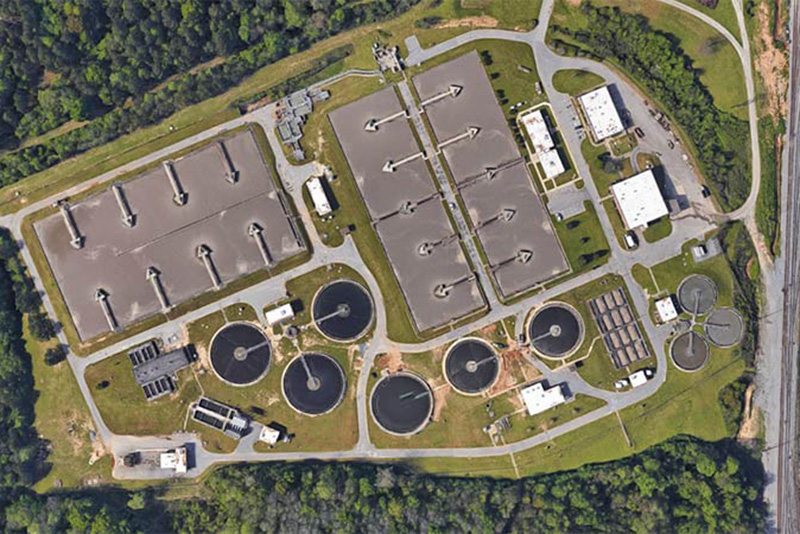
Lower Poplar and Rocky Creek WRF Upgrades
The Macon Water Authority partnered with Haskell for its first design-build project to upgrade the Lower Poplar and Rocky Creek WRF facilities, which had become inadequate to serve the growing community.
MWA operates one wastewater treatment facility and two wastewater reclamation facilities, which needed significant upgrades or replacements. This project had two job sites because of a change from belt presses to rotary presses. Haskell had to replace these in phases, with temporary piping until the new presses were installed, to ensure the plant remained operational. Haskell solved three challenges: a new lime silo, grit removal systems functionality, and effluent river pumps.
For the lime silo, Haskell repurposed existing parts of tanks for the new system and found uses for other parts elsewhere, a value engineering exercise that saved MWA $300,000 and aided the project’s environmental impacts.
The grit removal systems were not operating at a normal level, and debris was escaping them and making its way downstream. When the replacement of these systems was approached, the troughs and parts of the structures could be reused, which helped with cost savings and continued the plant’s operations during renovation.
Haskell’s design team developed a solution for the effluent river pumps, which utilized submersible pumps and pipe tubes to allow installation at a higher elevation, guarding against potential river swelling. An elevated platform was added to access the new pumps. Other upgrades included solids dewatering equipment, a bioreactor aerator motor, and sodium bisulfite feed system repair and chlorine analyzer replacements.
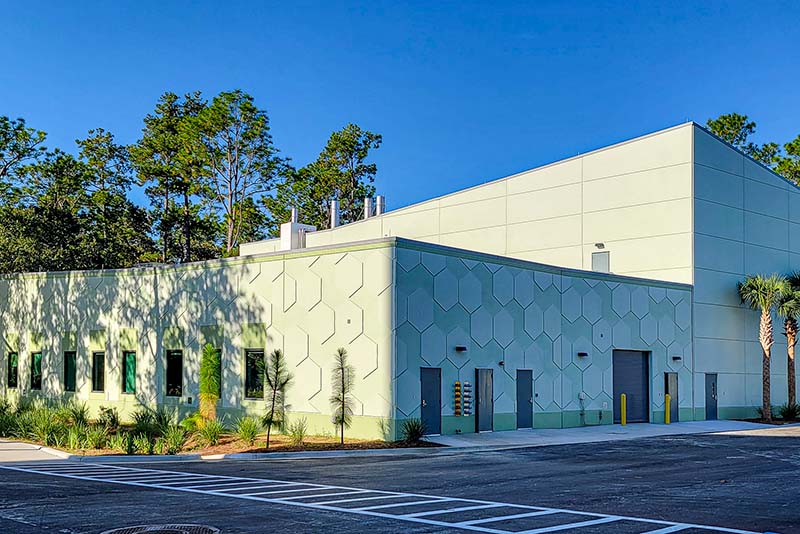
UF Florida Museum of Natural History (FLMNH) Special Collections Building
The Florida Museum of Natural History (FLMNH) Special Collections Building was a project of firsts for Haskell and a unique addition to the University of Florida campus. This 23,500-square-foot, two-story building stores the museum’s collection of over 40 million wet specimens collected over its 100-year history.
With the tilt-up panels molded in a bas-relief hexagonal pattern, the exterior of the first floor was inspired by the skin of an alligator, the university’s mascot. The purpose-built facility includes systems designed to provide the highest level of life safety and fire suppression. These features include specialized air handling, spark-free lighting fixtures, sprinklers, floor drains and storage tanks, large-scale fume hoods, and temperature and air quality sensors that together meet stringent modern building codes for storing materials preserved in alcohol.
The two-story floorplan offers 23,000 square feet of mobile, compacted high-density shelving systems, research laboratories and office space, providing ample room for the continued expansion of the wet collections.
This project was the first on UF’s campus to utilize tilt-up construction, in which concrete panels are cast and raised into position with a crane onsite. It also received Platinum Certification from the Florida Green Building Coalition (FGBC), the highest-level sustainable building certification.
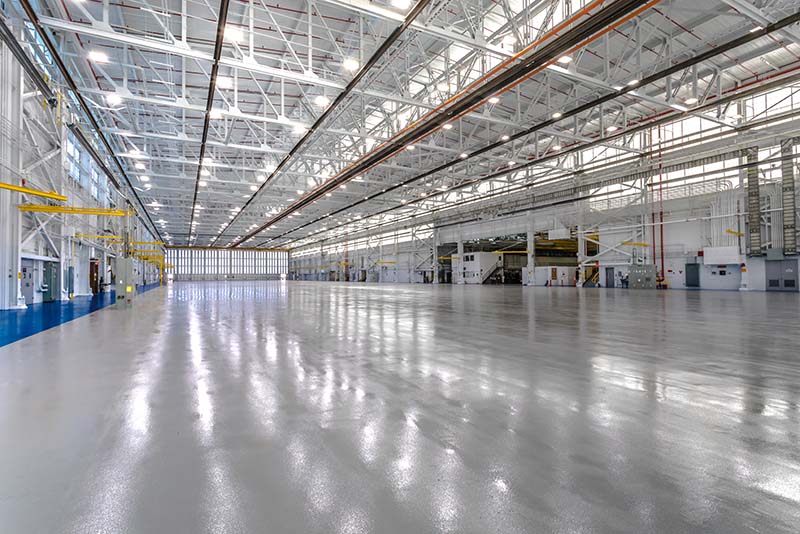
Fleet Readiness Center Hangar 101
Haskell designed and renovated the Fleet Readiness Center Hangar 101 for Naval Air Station Jacksonville. The project included significant demolition of the existing facility that was one of the base’s original structures and dates to 1940.
The 89,000-square-foot hangar and five attached mezzanines serve the Naval Air Station as the repair and restore hangar for aircraft to remain in combat-ready conditions. This project was done in multiple phases to ensure the facility remained operating at acceptable levels, and it was completed two months early.
This project featured a new roof, windows, new electrical systems and lighting, a new ventilation system, renovated offices and bathrooms, and repaired floors. When possible, original hangar features were retained and restored to maintain the hangar’s original look. Haskell discovered covered windows in the mezzanine that it exposed and included in the design, adding natural light and reducing energy usage. The main hangar door is one of the most iconic features, so refurbishing it was essential to maintain the aesthetic elements.
The technologies utilized focused on this historic hangar’s efficiency and sustainability. Virtual Design Construction (VDC) and Building Information Modeling (BIM) technologies aided Haskell in conceptualizing the structural elements of the building and visualizing the occupied hangar without aircraft. Extensive laser paint removal under strict safety procedures allowed the hangar to remain in use and expedited completion.
Solving complex architectural, engineering and construction projects with expertise and imagination is what we do. Contact us to discuss your facilities needs.

